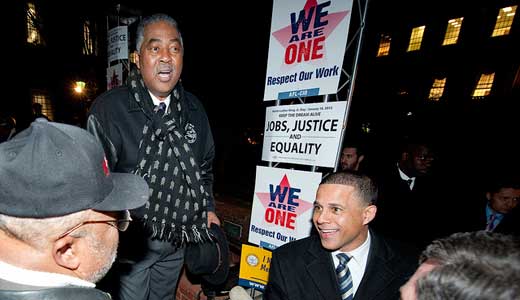
The Supreme Court is scheduled to hear Fisher v. the University of Texas, which challenges affirmative action policies that seek to establish or sustain racial, cultural, and gender diversity in college admissions.
The case will be heard in the fall at the height of the election campaign.
Many fear – with justification – that the present court will reverse previous court decisions that upheld by narrow votes affirmative action. While reactionaries have since the 1950s denounced “judicial activism” when it pertains to progressive civil rights and civil liberties Supreme Court decisions, they strongly support this example of judicial intervention aimed at destroying the remnants of a major progressive civil rights program.
Readers may be unaware that Communist trade unionists were pioneers in developing practical programs to integrate minorities and women into employment and leadership positions after generations of institutional and ideological discrimination. The term affirmative action did not exist then, but the policy did when communists leading the United Election Workers Union negotiated a contract shortly before World War II providing for a higher wage increase for women than for men because women workers had been subject to systematic discrimination.
For the leadership of the union, this was necessary to advance the principle of equal pay for equal work, which employers had long flouted. When communists in CIO unions fought to integrate leadership by promoting African-American activists, they took the position that the only way to unify the working class was to have leadership at all levels that was truly representative of membership. For Communists policies, which were later called affirmative action, were always first and foremost about ending discrimination within the working class so as it empower workers to win greater trade union and political victories.
These pioneering stands blossomed into the demands of civil rights activists in the 1950s and 1960s for positive or affirmative action by government to overcome generations if not centuries of discrimination in employment, education, etc.
Without such policies, discrimination would in reality continue in fact after it had been outlawed in law. The Civil Rights Act of 1964 outlawed discrimination against minorities in public accommodations and employment and established an Equal Employment Opportunity Commission as a regulatory commission to enforce the legislation.
The purpose of the legislation was clearly to advance greater economic integration and social justice. In 1965, President Lyndon Johnson signed an executive order calling upon the EEOC to advance affirmative action policies in the employment of minorities. Two years later, Johnson issued a similar executive order calling apron the Commission to advance affirmative policies in regard to women.
The next decade saw affirmative action policies advance substantially in spite of a massive counterattack by reactionaries against “quotas.” and “reverse racism,” i.e., policies to take away jobs, admission to schools, and promotions from whites and males and give them to minorities and women.
Although affirmative action had not been advanced by the courts, a sharply divided Supreme Court, in Regents of the University of California v. Bakke (1978) reached a compromise decision that barred affirmative policies aimed consciously at opening up opportunities for “previously discriminated minorities” but permitted affirmative policies aimed at either developing or sustaining “diversity” in student bodies. The case specifically involved a student who sued the University of California /Davis because he had been denied admission to its medical school, which had set aside 16 admissions out of 100 for “previously discriminated against minorities.”
Diversity in itself is a very positive thing. It makes social interactions more interesting and promotes greater social understanding. But it is far weaker and has been a far less successful foundation for affirmative action then the original principles, which sought to overcome in fact long-term t institutional discrimination against minorities and women.
This more conservative approach to affirmative action has been in place since 1978. surviving various assaults in legislatures, in referenda and in the courts. For progressives, its defense is necessary but we should not see it as sufficient as either ideology or policy.
We must denounce any court decision that ends this form of affirmative action while at the same time calling for a national affirmative action policy based on economic integration and social justice.
In this regard, a crucial “consent” decree negotiated by the EEOC in 1974 with the major steel companies and the United Steelworkers Union is perhaps the best example we have of what affirmative action was supposed to be.
The decree established both guidelines and timetables for hiring African Americans, Latinos, and women, especially in supervisory, skilled technical, and management training programs. It also replaced department seniority with general factory seniority, thus preventing managerial units from using seniority limit the promotion of discriminated against minorities. This is exactly the sort of affirmative action that we should fight for as we fight against this rightist maneuver to eliminate all forms of affirmative action.
Photo: MDGovpics // CC 2.0












Comments